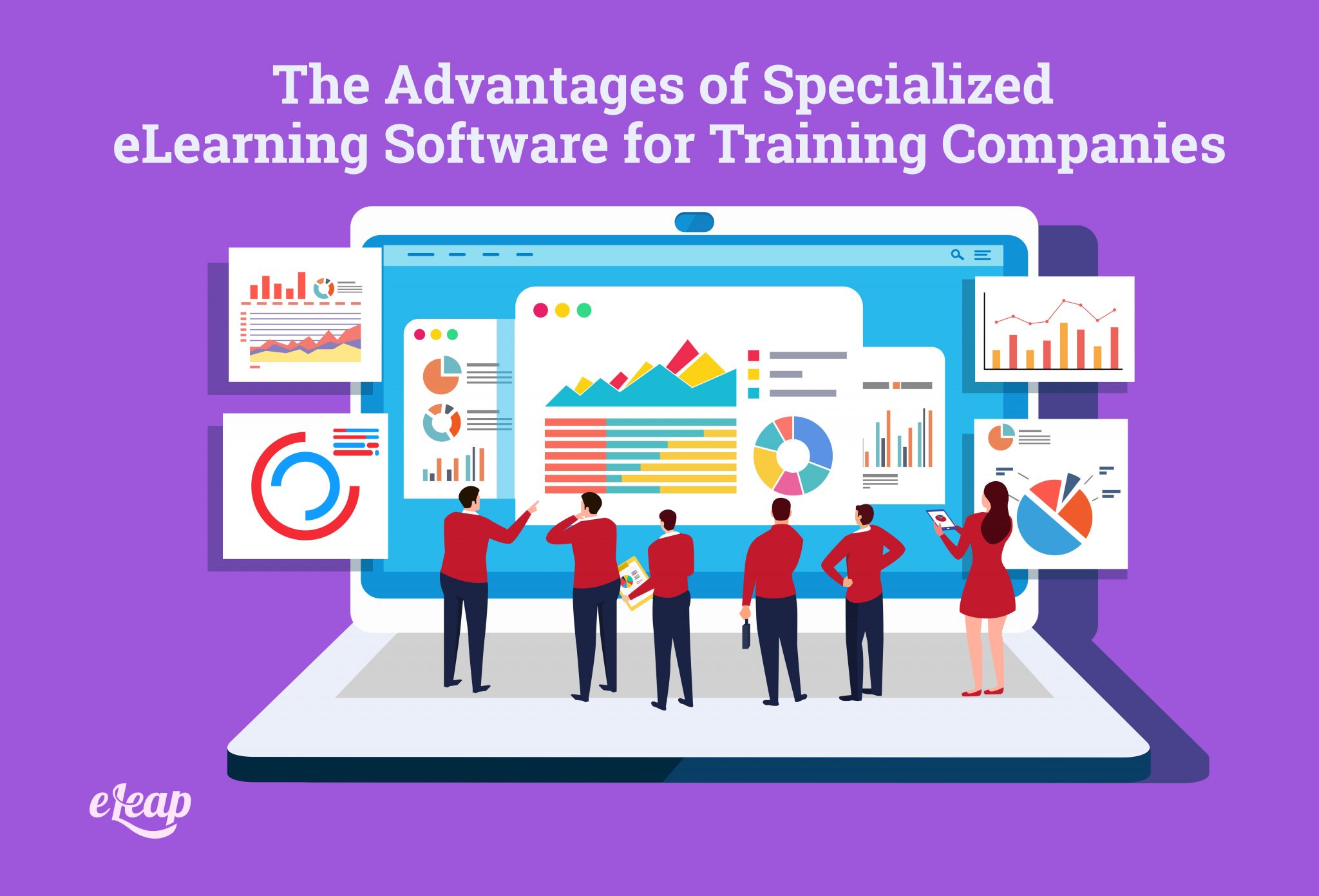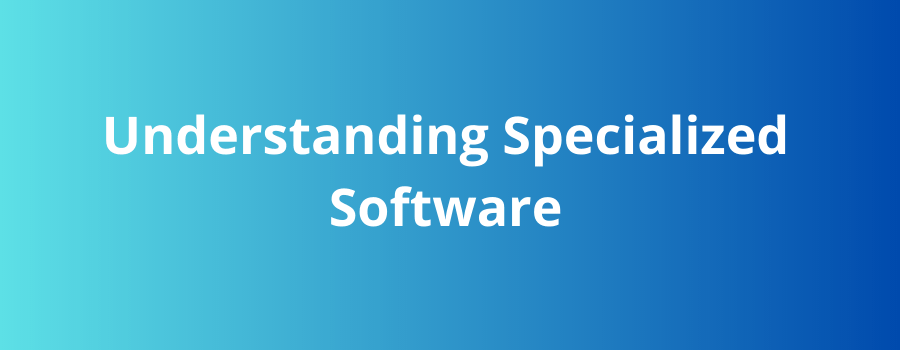Specialized software plays a crucial role in various industries, offering tailored solutions to enhance efficiency and productivity. From CAD software to healthcare EMR systems, let’s explore the impact of specialized software in modern workplaces.
Overview of Specialized Software
Specialized software refers to programs designed to cater to specific needs or requirements of a particular industry or task, unlike general-purpose software which serves a broad range of functions. These software solutions are tailored to address the unique challenges and demands of specific sectors, providing customized features and tools to optimize performance.
Examples of Industries Relying on Specialized Software
- Healthcare: Electronic Medical Records (EMR) software for patient data management.
- Construction: Building Information Modeling (BIM) software for project planning and design.
- Finance: Trading platforms for stock market analysis and transactions.
- Manufacturing: Computer-Aided Design (CAD) software for product development.
Benefits of Using Specialized Software
- Increased Efficiency: Tailored features streamline processes and enhance productivity.
- Improved Accuracy: Customized tools reduce errors and ensure precision in tasks.
- Enhanced Security: Industry-specific software provides specialized security measures to protect sensitive data.
- Better Compliance: Specialized software often includes regulatory compliance features specific to the industry.
Types of Specialized Software
When it comes to specialized software, there are various categories that cater to specific industries and functions. These software solutions are designed to streamline processes, enhance efficiency, and improve productivity in their respective sectors.
CAD Software (Computer-Aided Design)
CAD software is used by engineers, architects, and designers to create detailed 2D and 3D models of products, buildings, and structures. These tools allow professionals to visualize designs, make modifications easily, and generate precise blueprints for manufacturing or construction purposes.
Healthcare EMR Systems (Electronic Medical Records)
Healthcare EMR systems are used by medical facilities to digitize and manage patient records, appointments, prescriptions, and medical histories. These software solutions improve accuracy, efficiency, and communication among healthcare providers, leading to better patient care and outcomes.
Accounting Software
Accounting software is essential for businesses to manage financial transactions, track expenses, generate invoices, and prepare financial reports. These tools automate complex accounting tasks, reduce human error, and provide real-time insights into the financial health of a company.
GIS Software (Geographic Information Systems)
GIS software is used by urban planners, environmental scientists, and government agencies to analyze and visualize geographical data. These tools help in mapping, spatial analysis, and decision-making related to land use, natural resources, and infrastructure development.
Video Editing Software
Video editing software is utilized by filmmakers, content creators, and videographers to edit and enhance videos for various purposes. These tools offer features for cutting, trimming, adding effects, and improving the overall quality of videos for professional or personal use.
Engineering Simulation Software
Engineering simulation software is employed by engineers and researchers to simulate and analyze the behavior of complex systems or structures. These tools help in testing designs, predicting performance, and optimizing products before physical prototyping, saving time and costs in the development process.
Legal Practice Management Software
Legal practice management software is designed for law firms and legal professionals to manage cases, documents, appointments, and billing efficiently. These tools streamline workflow, improve client communication, and ensure compliance with legal regulations, enhancing the overall productivity of legal practices.
Development of Specialized Software
When it comes to designing and developing specialized software, it is essential to follow a structured process that takes into account the specific requirements of the industry for which the software is being developed. Understanding these industry-specific requirements is crucial in ensuring that the software meets the needs of its users and provides the functionality they require.
Design and Development Process
- Initial Planning: This phase involves gathering requirements from stakeholders, defining the scope of the software, and creating a roadmap for development.
- Design: During this stage, the software architecture is designed, user interfaces are created, and the overall structure of the software is planned.
- Development: The actual coding and programming of the software take place in this phase, following the design specifications and requirements.
- Testing and Feedback: Once the software is developed, it undergoes rigorous testing to identify and fix any bugs or issues. User feedback is also crucial at this stage to ensure that the software meets user expectations.
- Refinement: Based on user feedback and testing results, the software is refined and improved to address any issues and enhance its functionality.
Importance of Understanding Industry-Specific Requirements
Industry-specific requirements are critical in specialized software development as they dictate the features, functionality, and overall design of the software. By understanding these requirements, developers can tailor the software to meet the unique needs of the industry, ensuring that it provides maximum value to its users.
User Feedback and Testing
- User feedback plays a crucial role in refining specialized software as it provides valuable insights into how users interact with the software and what improvements are needed.
- Testing helps identify any bugs or issues in the software, allowing developers to address them before the software is deployed to users.
- Continuous testing and feedback loops are essential in the development process to ensure that the software meets user expectations and functions as intended.
Implementation and Integration

When it comes to implementing specialized software into existing systems, there are several challenges that organizations may face. These challenges can include compatibility issues, data migration complexities, resistance from employees, and the need for extensive training. However, with the right strategies and best practices, seamless integration and effective implementation can be achieved.
Challenges of Implementing Specialized Software
- Compatibility issues with existing systems
- Complexities in data migration
- Resistance from employees to adopt new software
- Need for extensive training to ensure effective use
Strategies for Seamless Integration
- Conduct a thorough compatibility assessment before implementation
- Plan and execute a detailed data migration strategy
- Involve key stakeholders in the decision-making process
- Provide ongoing support and training for employees
- Utilize integration tools and APIs for smooth integration
Best Practices for Training Employees
- Offer comprehensive training sessions with hands-on practice
- Provide access to user manuals and online resources for reference
- Assign mentors or experts to guide employees during the transition period
- Encourage feedback and address any issues promptly
- Regularly assess employee proficiency and provide additional training as needed
Customization and Scalability

Customization and scalability play a crucial role in specialized software, allowing businesses to tailor the technology to meet their unique needs and accommodate growth. Let’s explore how these aspects are essential for maximizing the effectiveness of specialized software solutions.
Importance of Customization
Customization options in specialized software are vital for businesses to align the technology with their specific workflows and requirements. By customizing the software, organizations can optimize processes, improve efficiency, and address unique challenges that off-the-shelf solutions may not cover.
- Customization allows businesses to add or remove features based on their needs, ensuring that the software caters to their specific requirements.
- By tailoring the user interface and functionality, organizations can enhance user experience and productivity, leading to better adoption and utilization of the software.
- Customization also enables businesses to integrate the software seamlessly with existing systems and processes, creating a cohesive and efficient IT environment.
Scalability for Growth
Scalability refers to the ability of specialized software to expand and adapt to the changing needs of a growing business. This feature is essential for ensuring that the software can accommodate increased data volumes, users, and transactions without compromising performance or functionality.
- Businesses can scale specialized software by adding more resources, such as storage capacity or processing power, to handle growing demands effectively.
- Scalable software allows organizations to easily upgrade to higher versions or modules as their requirements evolve, ensuring long-term usability and relevance.
- By providing scalability, specialized software supports business growth and innovation, enabling companies to stay competitive and agile in a rapidly changing market.
Examples of Customization in Action, Specialized software
Let’s look at some examples of how businesses can customize specialized software to suit their specific workflows:
- Customizing reporting features to generate tailored analytics and insights that align with the organization’s key performance indicators.
- Integrating third-party tools or plugins to enhance the functionality of the software and meet unique business requirements.
- Configuring workflow automation processes to streamline operations and improve efficiency in line with the company’s operational structure.
Final Summary: Specialized Software

In conclusion, specialized software proves to be a game-changer in optimizing processes and meeting industry-specific needs. With the ability to customize, scale, and integrate seamlessly, businesses can leverage these tools for sustained growth and success.
